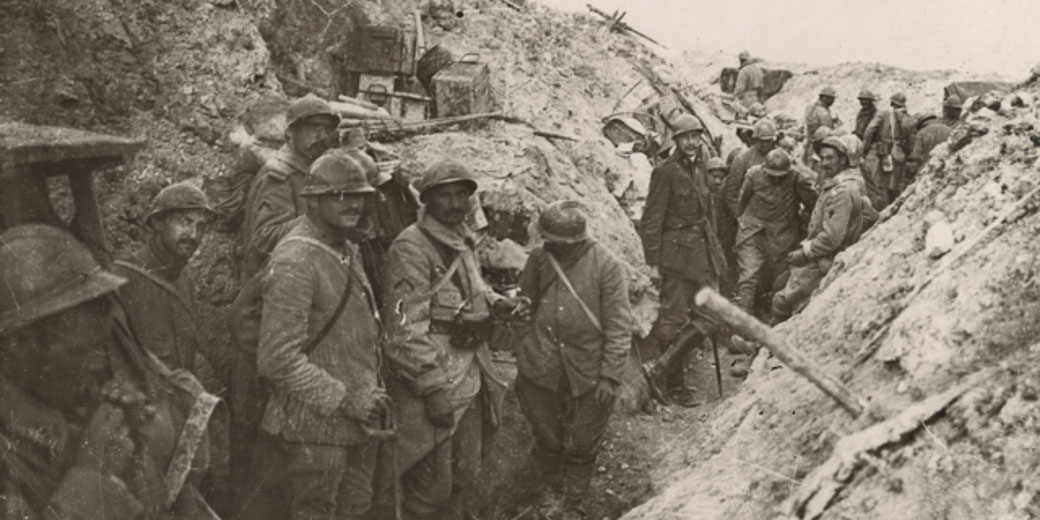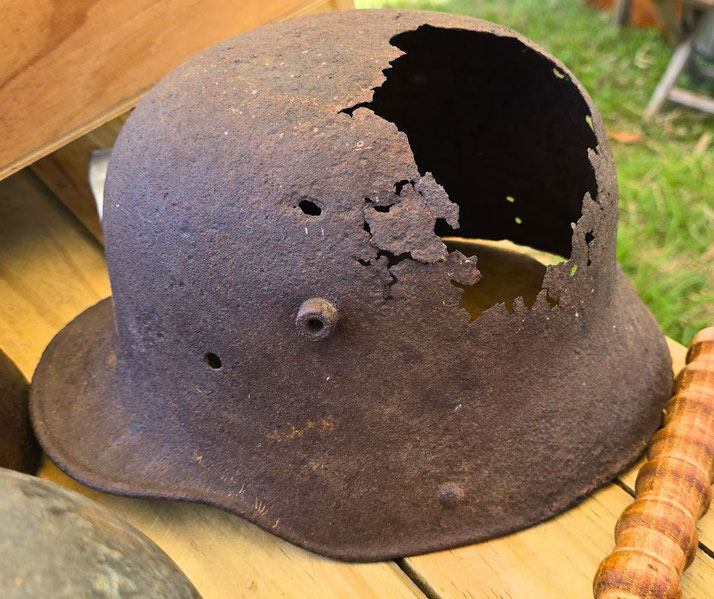The horrific reality of living in a WWI trench

In the early days of World War One, the trench warfare that would come to define the conflict was not yet apparent.
The war had started out as a series of quick, mobile battles fought in open fields. However, as the months went on and casualties mounted, both sides found themselves fighting in trenches more and more often.
But what were trenches and how were they used?
And what would it have been like to live and fight in them?
What were trenches?
Trenches were initially holes that were dug into the ground to hide soldiers from enemy fire.
Trench warfare became a dominant strategy on the Western Front after the Battle of the Marne in September 1914, leading to a stalemate that lasted for most of the war.
Over time, trenches developed into complex systems of fortifications that included multiple lines of defense, communication trenches, and support areas.
The longer and deeper the trenches became, the better they were at facilitating the safe movement of troops and supplies.
Both sides of the war used trenches. They effectively became small towns that had their own living quarters, populated by hundreds or thousands of men at a time.

Parts of a trench
Each part of a trench would be given different names depending on its purpose.
When fighting, the soldiers would stand on a step to fire their weapons, which was known as a 'fire step'.
This is also where soldiers would stand watch and keep an eye out for enemy activity.
When shooting, the soldiers would look over a parapet, which was a small wall or dirt bank.
This served as a barrier to protect soldiers from enemy fire.
'Duckboards' were placed on the floor of the trenches to keep soldiers' feet dry, as the trenches would often fill with water.
At night, the soldiers would try to get some sleep in their 'bivouacs' or 'dugouts'.
These were small shelters made out of whatever materials they could find, and were usually only big enough for a two or three people.
Soldiers would often have to share bivouacs with other soldiers, which led to close friendships forming between them.
Then there was 'no-man's land': the area of ground located between two sets of opposing trenches.
This is where soldiers would fight and die, as they were sent out to advance on the enemy's lines.
However, no-man's land was a terrible place, full of dangerous obstacles, such as barbed wire and shell craters.
It was not uncommon for soldiers to get caught in these obstructions and be unable to escape.
Physical health
The first thing to understand about life in the trenches is that they were incredibly dirty places.
When it rained, the trenches would often be full of water and mud. Also, since there was rarely any proper plumbing or sewage, human waste would accumulate and stagnate in the puddles of water.
This made the trenches a breeding ground for disease, which was a constant threat to soldiers' health.
In these filthy conditions, lice and rats thrived. These pests were common problems for soldiers in the trenches.
Soldiers would have to regularly delouse their clothing and bodies to prevent infestation from the lice.
Soldiers had to be particularly careful of rats, which would often bite them while they slept.
One of the most common problems faced by soldiers in the trenches was trench foot.
This is a horrible medical condition caused by constant exposure to damp and cold conditions.
Soldiers who stood in water for too long and could not dry their feet quickly fell victim to this disease.
The soldier's feet would become red and sore due to inflammation. Then they would become numb.
If left untreated for long enough, it would become infected with gangrene. In the most extreme of cases, the soldier's feet had to be amputated.
Mental health
A soldier's daily routine in the trenches included 'stand-to' at dawn and dusk, where they would be on high alert for enemy attacks.
However, an assault could happen at any moment. The troops had to ensure that they were constantly ready.
As a result of this pressure, soldiers in the trenches developed a condition called 'shell shock'.
This was caused by the constant stress of being under fire from enemy artillery.
Symptoms of shell shock include anxiety, depression, and post-traumatic stress disorder (PTSD).
Even at its mildest, shell shock could also cause physical symptoms such as headaches and nausea.

Another thing to understand about life in the trenches is that it was very boring.
Soldiers would often spend days or weeks doing nothing but sitting in their trench, waiting for something to happen.
To keep the troops busy, they were assigned daily tasks like repairing the trenches, sentry duty, and cleaning weapons.
However, this boredom could be punctuated by moments of intense fear and violence, at any time, as shelling and attacks were always a possibility.
But, life was not 'all work and no play'. Soldiers often found ways to entertain themselves in between battles. They would play cards or dice or even sing songs.
Some trenches even had libraries, where soldiers could borrow books to pass the time.
Of course, the ever-present danger of being killed or wounded meant that soldiers always had to be on their guard, even when they were relaxing.
Despite the conditions, many soldiers did find ways to make the best of their situation.
They formed close bonds with their fellow soldiers and developed a deep camaraderie.
Further reading
What do you need help with?
Download ready-to-use digital learning resources
Copyright © History Skills 2014-2025.
Contact via email
With the exception of links to external sites, some historical sources and extracts from specific publications, all content on this website is copyrighted by History Skills. This content may not be copied, republished or redistributed without written permission from the website creator. Please use the Contact page to obtain relevant permission.





